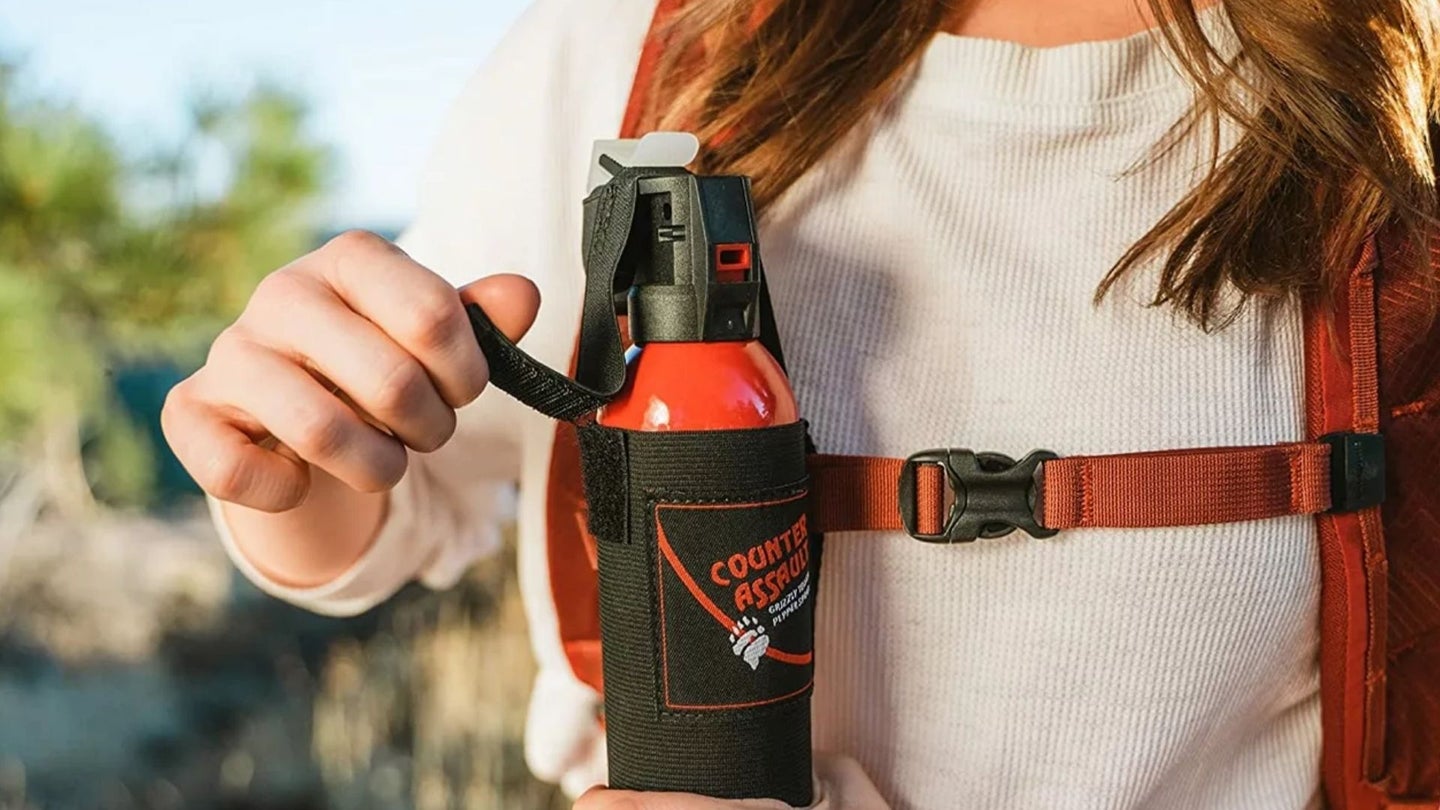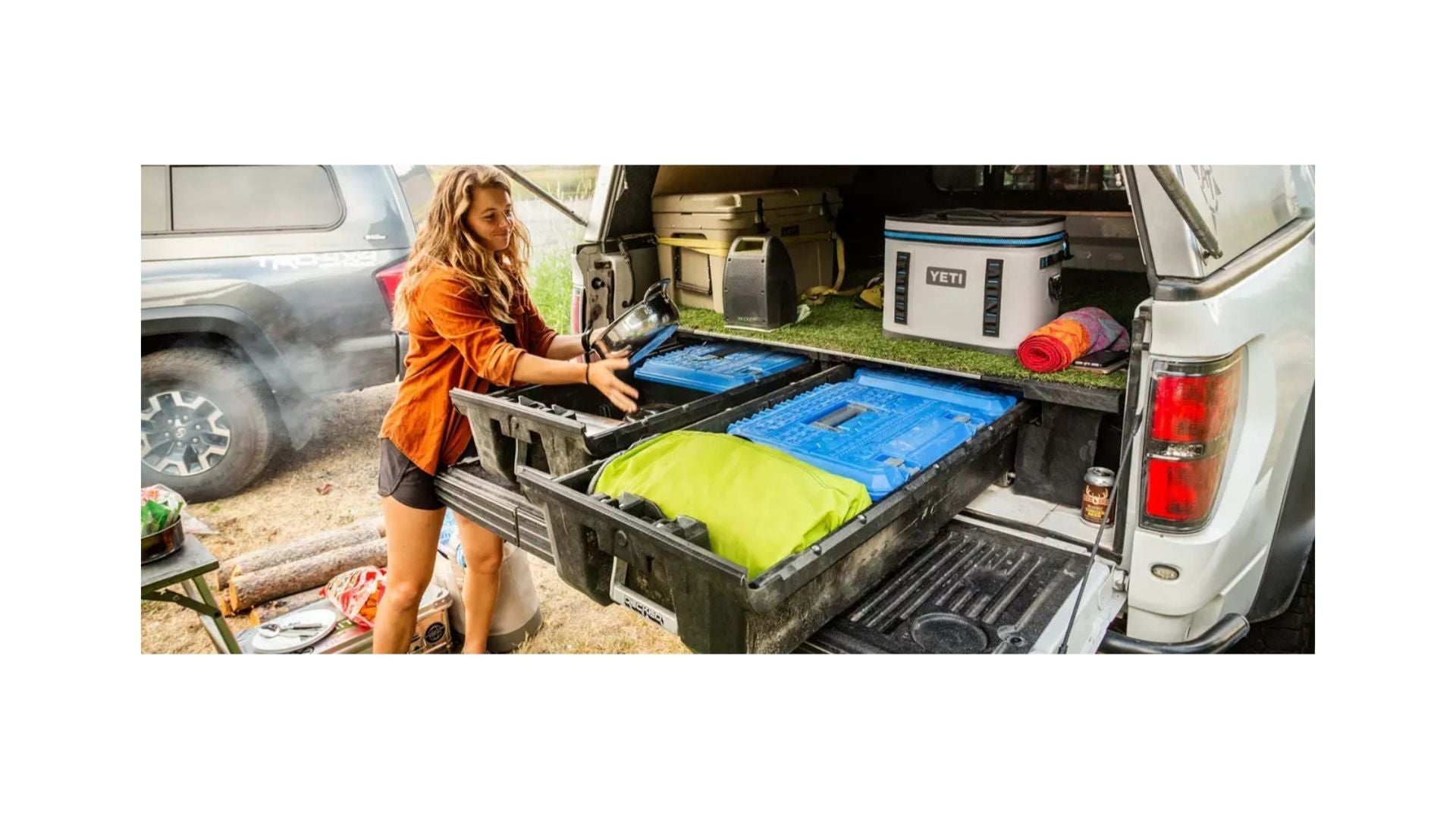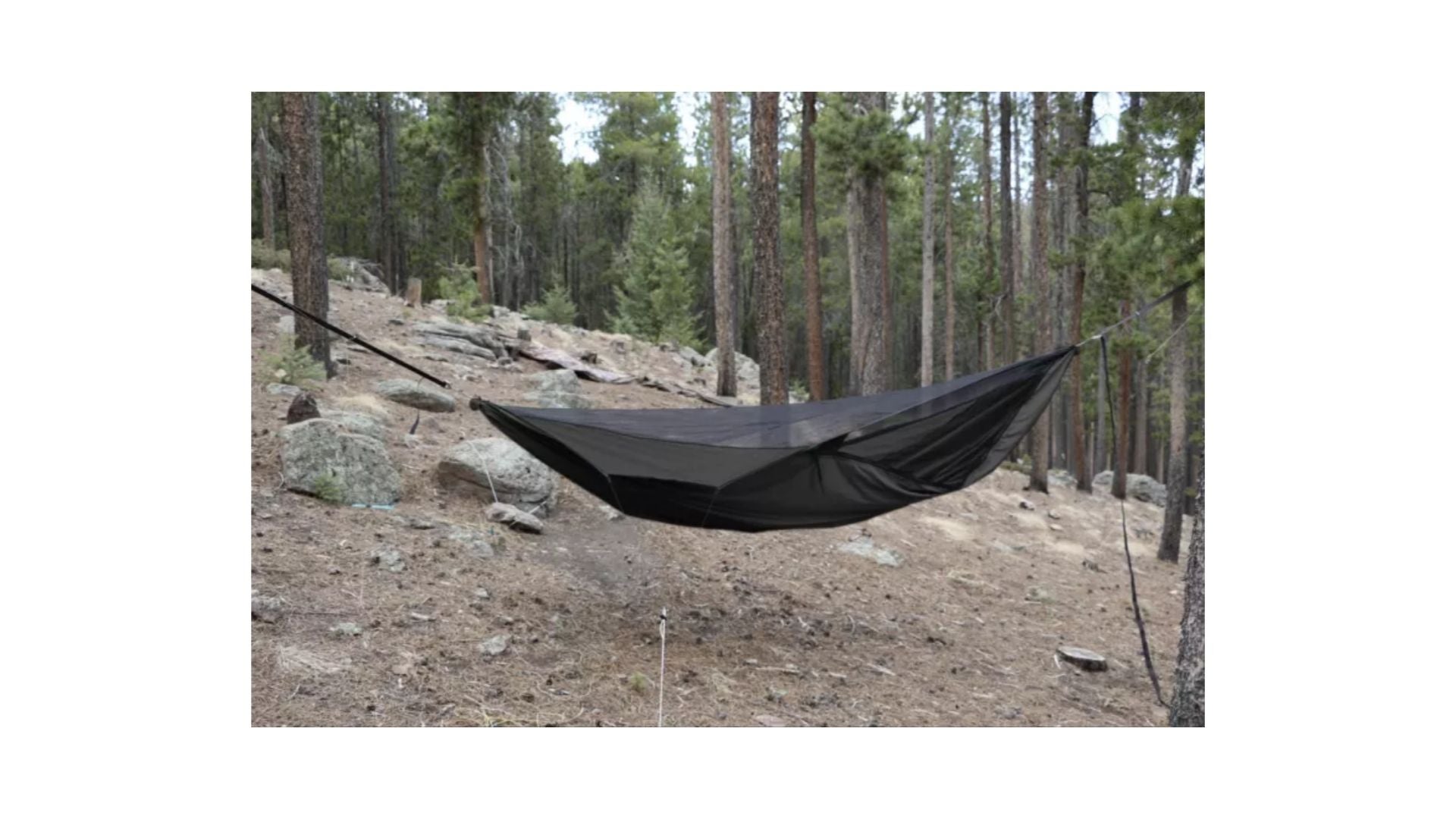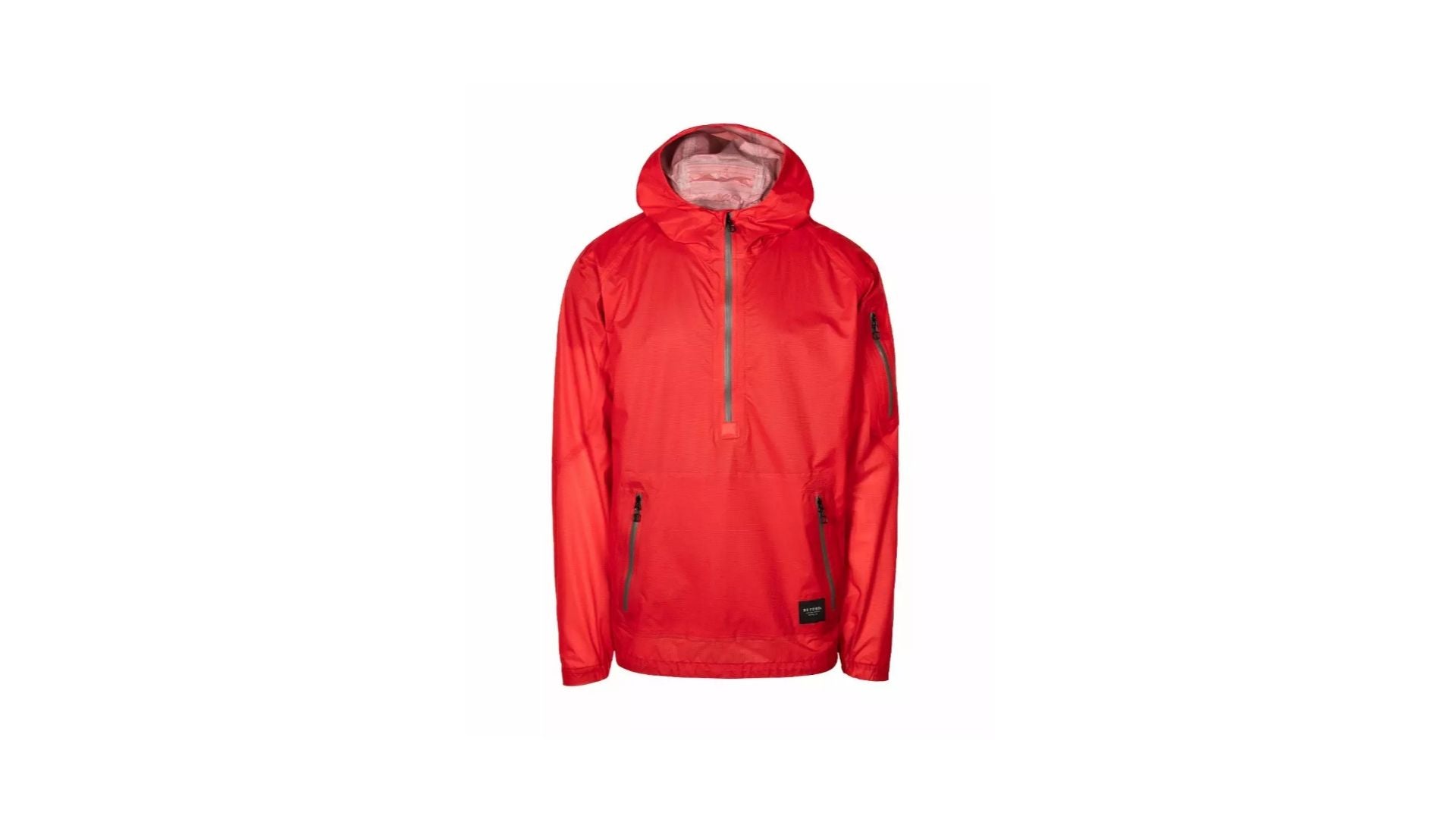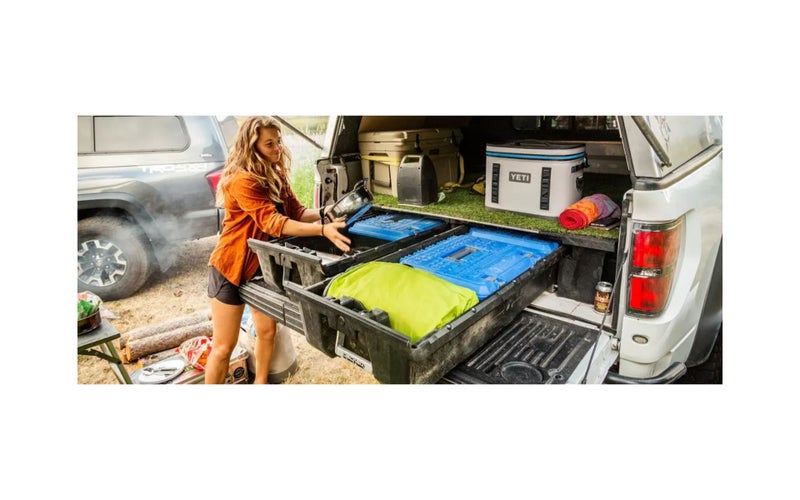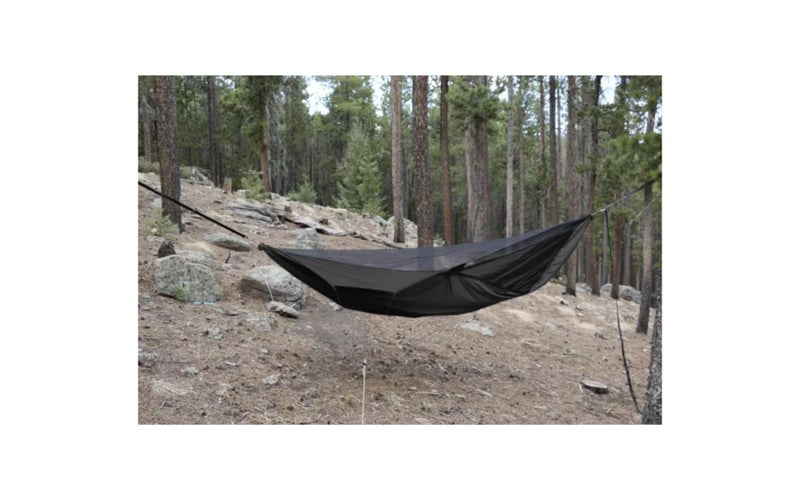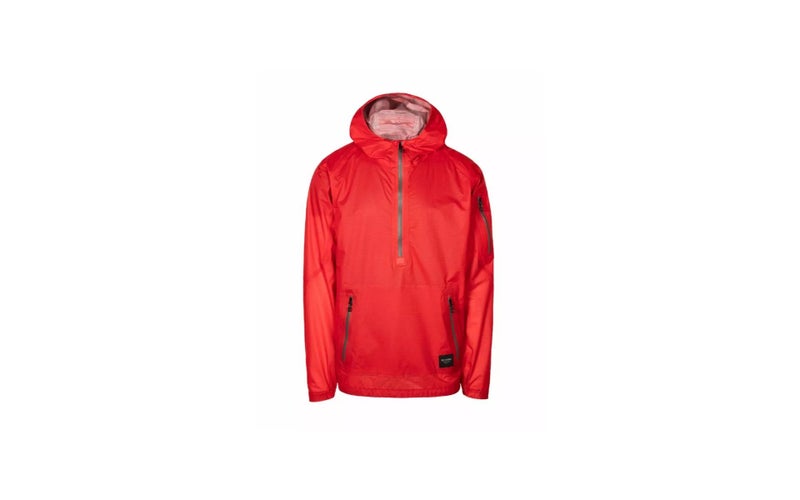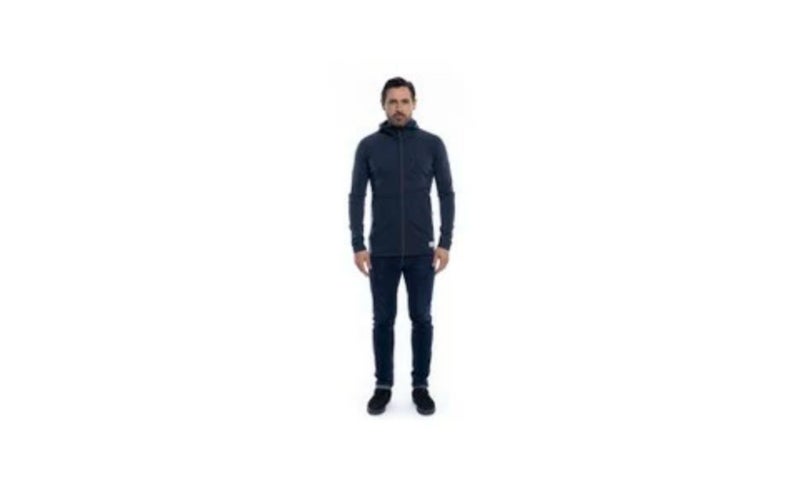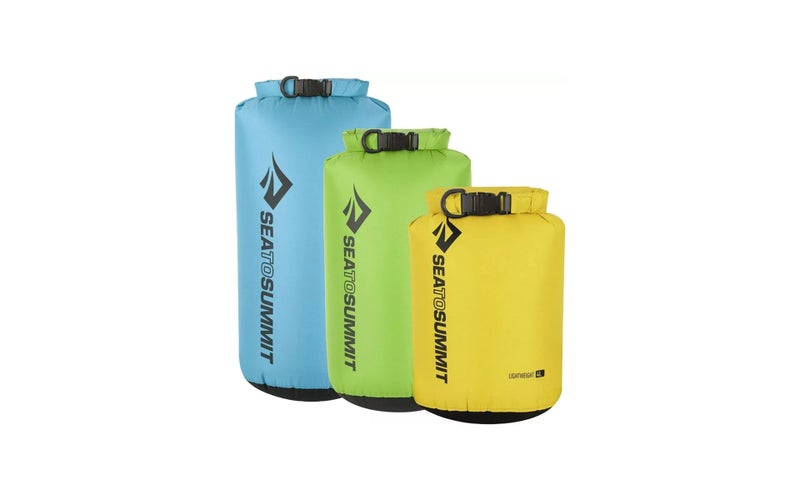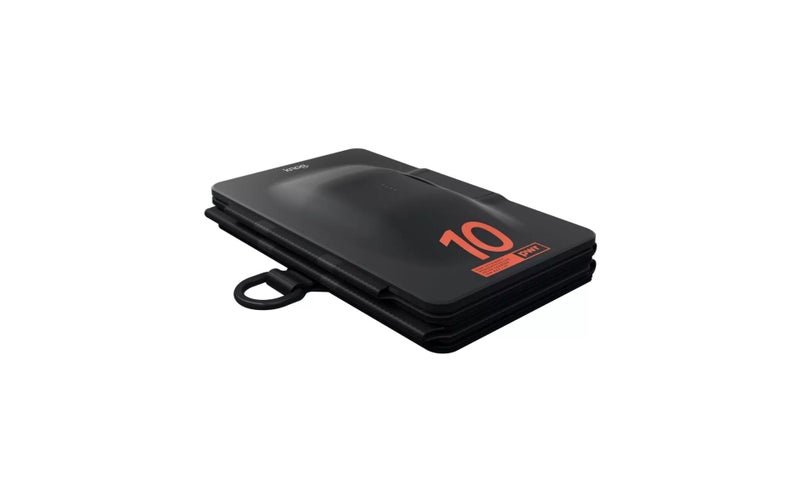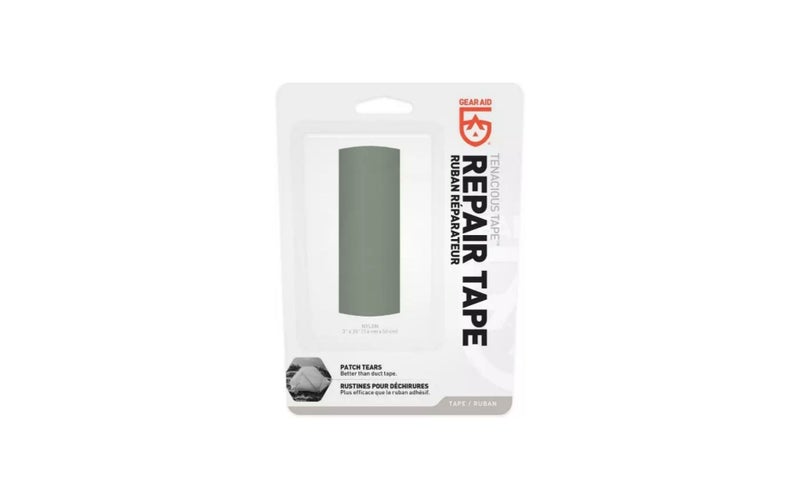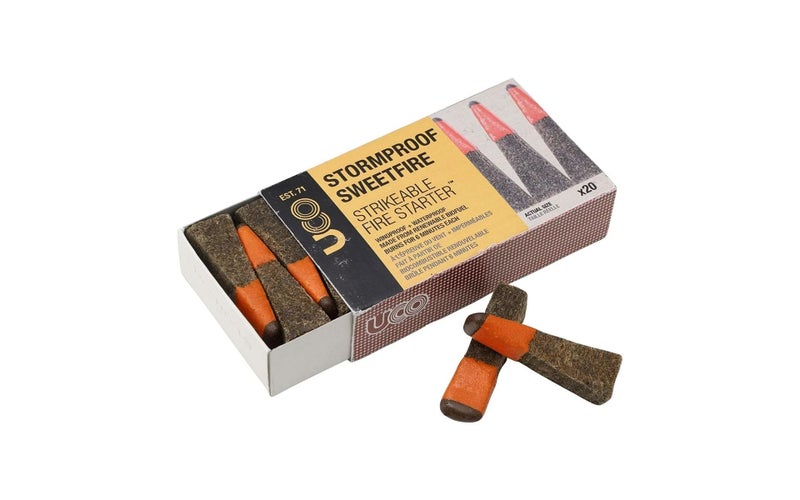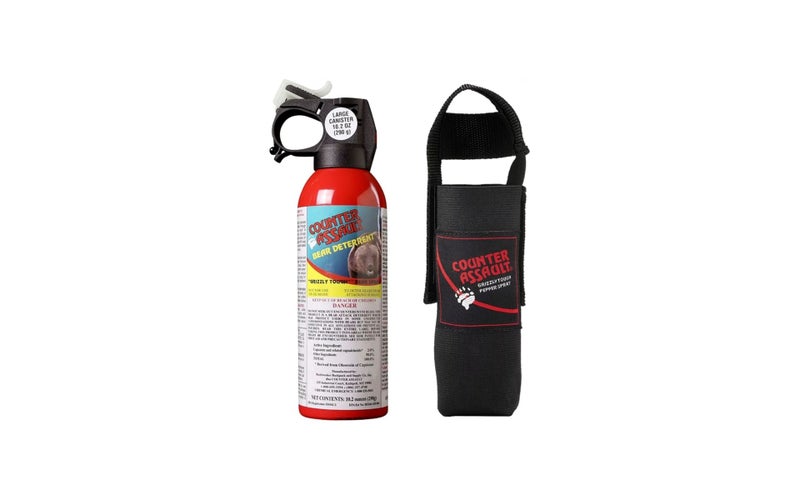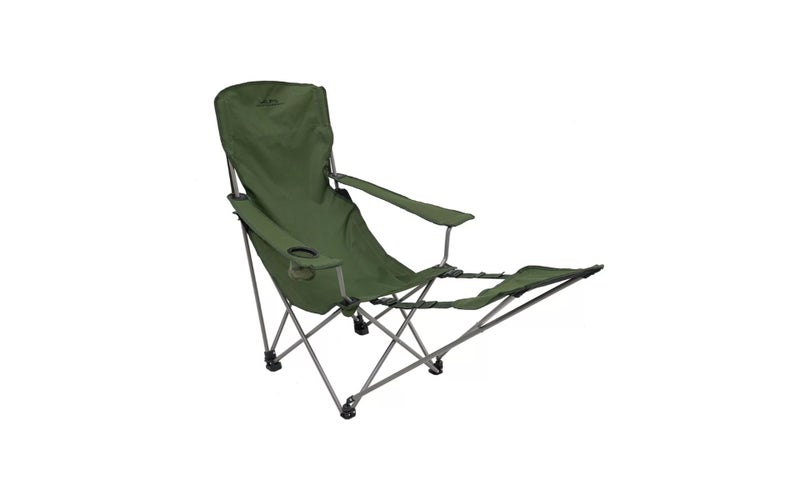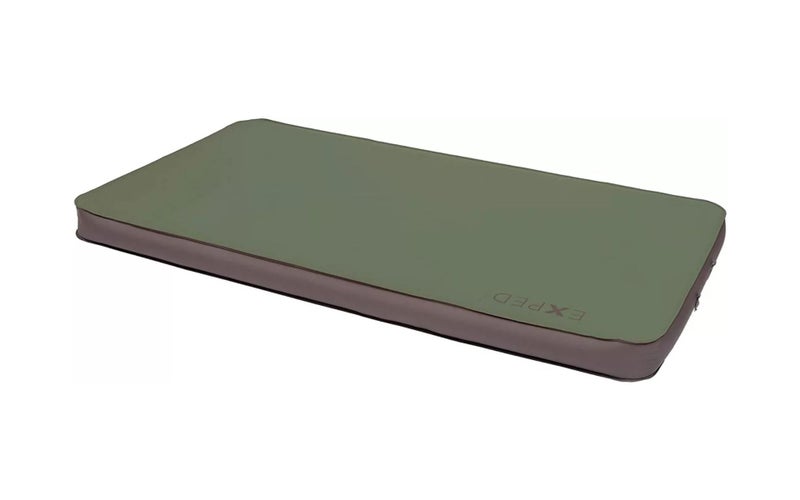We may earn revenue from the products available on this page and participate in affiliate programs.
The world of available camping accessories is simply bewildering. For every conceivable outdoor situation, someone has developed a device — and most of them are terrible. Want an electric-powered rotating marshmallow fork? It’s out there. How about an inflatable mattress with built-in audio speakers? Is that where your magic happens? Or a $400 Swiss Army knife that has 82 tools, is completely un-ergonomic, and almost weighs a pound? It is designed to do so much, it does nothing well at all!
You’re starting to get the gist: Most camping accessories are complete junk, peddled by marketers from the comfort of their cushy Madison Avenue offices. That said, there are some camping accessories that are truly valuable. I’m here to separate the wheat from the chaff and help you find the best camping accessories that meet your needs.
I’m a minimalist, so when I’m backpacking or camping, I do my best to take only the gear I need to accomplish my goals while leaving just a smidge of safety margin. I seek out the lightest, most functional, and least expensive gear for the job, so I took a wide look around and contacted the gear reps I know to see what’s new. I also reviewed my list of favorite gear items that are currently in my backpack. In this article, we’ll talk about gear that will help you better organize your trips, gear that will help you enjoy a good night’s sleep, gear that will keep you warm and dry, and gear that will keep you from getting eaten by a bear or abducted by space aliens. (#ProTip: Always wear the foil.) I hope this list of the best camping accessories for 2022 helps you find the gear you need and also dial you into some new products out there.
How we tested
I selected all of the best camping accessories in this review based on personal ownership, hands-on inspection, performance reputation, interviewing other experts, and thoroughly reviewing manufacturers’ specifications. I take my time to get to know the strengths and weaknesses of each item, and also check out the reviews of other experts just to make sure we’re not missing anything. For new items, I ask for samples from the makers and test them in the field. When that’s not possible, I visit the products in the store. In either case, I also review the manufacturer’s websites, user comments, YouTube reviews, and third-party evaluations, just to make sure I’m not missing anything.
When researching the best camping accessories, I based my criteria on my own experiences using outdoor gear in the field for more than 35 years. I’m well familiar with the major manufacturers of outdoor equipment, know their reputations, and have a sense of their customer service — which is also super important. I also speak with other people who spend considerable time outdoors for their thoughts as well.
After gathering enough high-performing products for a best-of article, I racked and stacked each based on their attributes, design, and performance. My bias is towards the lightest, best-functioning, and lowest-cost solutions available. We don’t torture test gear here at Task & Purpose — we test within normal usage limits. When gear does fail or break, we contact the manufacturer to see if and how they stand by their products. (I had one GoreTex jacket manufacturer replace a three-layer hardshell after 20 years of use. Needless to say, I am a die-hard for that company now.) I also take a look at how easy the gear is to maintain or repair in the field — the simpler the better.
For final selection, I take all factors into consideration and think: What is the gear I’d most want in my pack? What would I trust my life to in the backcountry? Those are the recommendations I forward for your consideration. Furthermore, it’s of the utmost importance to the Task & Purpose team that our readers know our commitment to open, fair product recommendations and reviews, and that you can trust us to provide you with unbiased, balanced information.
I love my truck, but there are times I wish I had more organized storage — especially in the bed. Well, Decked has come up with a pretty novel solution that provides a low-profile, weatherproof, and secure storage system in the truck bed while also allowing for cargo space on top. Plus, this system is ideal for truck camping.
The Decked drawer system is U.S.-made and constructed from high-quality, high-density polyethylene, stainless steel hardware, aluminum handles, and a galvanized steel subframe. The drawers roll in and out on urethane wheels like butter. It’s super sturdy and has a 2,000-pound load capacity. The system has options for full-sized and mid-sized trucks, and also cargo vans. The Decked drawer system drops into a truck’s payload and has two sliding drawers accessible when the tailgate is down.
Each drawer can accept modular organizers like “ammo cans,” a Pathfinder Campfire Cooking Kit, a survival kit, padded gun racks, and cargo boxes. Each system is custom-shaped to the bed and fits like a glove. The installation is simple and takes about two hours to do. It’s also made from 100 percent recycled HDPE and recycled American steel — bonus!
- Product Specs
- Materials: high-density polyethylene, stainless steel hardware, cast aluminum handles, and galvanized steel subframe
- Weight capacities:
- Payload: 2,000 pounds
- Drawers: 200 pounds
- System dimensions (short bed/standard bed):
- Length: 64.54 inches / 75.25 inches
- Width: NA/ 47 inches
- Height: 12 inches / 12 inches
- Weight:
- Short bed: 220 pounds
- Standard bed: 230 pounds
- Click here for dimensions
Well-made
Well-designed
Waterproof
Dustproof
Secure
Expensive
You have to assemble and install
If you haven’t tried hammock camping, you really should. Well, first make sure where you are going has a lot of trees, and then try it. Why would you want to hammock camp? Well, the advantages are many. First, you can camp on rocky or sloped terrain — provided you have two trees 12- to 18-feet apart. Second, the setup is super fast. Third, sleeping is super comfy. Fourth, hammocks are lighter to carry than tents. Do you really need more reasons at this point?
If you are going to give hammock camping a go, I strongly recommend the Warbonnet XLC. I’ve been using this setup for a number of years now and really like it. Warbonnet just upgraded the Blackbird XLC with their DreamTex fabric — a combination of traditional ripstop nylon weave with a bias directional diamond grid, which gives a cotton-like texture and an amazing strength-to-weight ratio. The Blackbird XLC is 11 feet long and 62 inches wide at the body with a 112-inch ridgeline. It comes standard with a fully removable mosquito net. The design features an entry or exit on either side of the hammock and a wide foot box for maximum legroom.
One feature I absolutely love is the storage shelf, which provides about two square feet of organizable storage inside of the hammock. It also has elasticized guy lines to help spread out the shelf and comes with a stuff sack — color-coded so you know which end is which. The XLC is compatible with four different suspension options including continuous loops, webbing with buckles, whoopies with Dynaweave straps, or a bracket suspension. It comes in single-layer (up to 275-pound comfort load), lightweight double-layer (up to 275-pound comfort load), and heavyweight (up to 400-pound comfort load) configurations.
- Material: 40D DreamTex ripstop nylon (single layer)
- Colors: 11 options
- Size: 11 feet x 62 inches
- Maximum comfort load: 275 pounds
- Maximum load: 400 pounds
- Weight: 1 pound 5.75 ounces
Super comfortable
Great design
Fast setup
Mosquito net
Doesn’t come with rain tarp
Camping is fun, but it can also suck when you are cold and wet. And you’re usually wet because you forgot to bring along a good rain jacket. I recently tried Beyond Clothing’s new Yuba Anorak and immediately loved it.
While not as well-known as some of the big brand outdoor clothing makers, Beyond Clothing has been making quality garments since 1996. Its Yuba L6 Rain Anorak is made from fully seam-sealed ultra-lightweight three-layer Pertex, so it’s fully water- and wind-proof. The Yuba has a 20,000mm waterproof rating, and at only 7.76 ounces, it is one of the lightest three-layer hardshells on the market. It also sports a 30,000g breathability rating which ensures you won’t turn into a sweaty mess during high-output efforts.
The Yuba comes with some nice features for a minimalist jacket, including a self-stowing pocket, making it very easy to pack. It also has durable waterproof zippers, an adjustable, helmet-compatible hood, a kangaroo and a right bicep pocket, and a 3M black reflective treatment for increased visibility (except on the coyote brown variant).
As for fit and design, the sleeves are articulated for freedom of movement, and the droptail hem with drawcord provides additional coverage and helps keep the wind out. The cuffs are self-finished and have partial elastic undersides. This is an ideal jacket to keep on hand for unexpected showers.
- Sizes: Mens S, M, L, XL, 2XL
- Fabric: 3-layer Pertex with DWR finish
- Fit: Athletic
- Weight: 7.76 ounces
Ultralight
Breathable
Water/windproof
Super packable
Stuffs into own pocket
Pricey
The older I get, the more I hate plastics. I see plastic waste everywhere, and now researchers say we each have about a credit card’s worth of microplastics inside of our bodies. While I love staying warm and carrying minimal weight when backpacking, I’m starting to trend away from synthetic fleeces, which are made from plastics. Lately, I’ve tried a few merino wool base layers and warming layers and really like them, especially Artilect’s Eldorado Merino Hoodie. It’s the perfect mid-layer accessory for camping or backpacking.
Merino wool requires minimal washing, has great durability and warmth, and is naturally odor-resistant. It’s nature’s super fiber. I loved the Eldorado Hoodie from the moment I put it on. It’s athletic in cut and trim in fit, so you can vibe while not feeling baggy. The 310GSM Nuyarn high-tech merino fabric provides extra loft and a great warmth-to-weight ratio and it dries five times faster than other wools, provides 35 times more stretch without using elastane, is 50 percent more durable, has 35 percent more loft, is 35 percent more wind-resistant, and uses 30 percent less raw materials. It’s super soft to the touch, has flat-sewn seams and a zipper garage to minimize chafing, and has great stretch and recovery. The underarms are gusseted for maximum range of motion and it features thumb loops for making it easy to slip on another layer.
The Eldorado has two hand warmer pockets and a chest pocket for small items like sunglasses. It also features a scuba-style hood. It’s super comfortable, very stylish, and highly recommended for camping, hiking, skiing, climbing, and kickin’ around town. Since it arrived, I swear I’ve worn this 75 percent of my waking hours. Love it! Check out Artilect’s base layers too. They’re fantastic.
- Sizes: Mens XS, S, M, L, XL
- Fabric: 310GSM Nuyarn merino wool
- Fit: Slim/athletic
Warm
Comfortable
Wind-resistant
50% more durable fabric
Dries 5x faster than other wools
Provides 35x more stretch without elastane
Expensive
Somewhat heavier than synthetic fleeces
Wet gear sucks. Once it gets soggy, it gets heavy and gives you the added task of drying it all out, which could take days depending on weather and humidity. The best way to keep this from happening is to use dry sacks, and the best I’ve found so far are made by Sea to Summit. It makes heavyweight bags for river rafting and lightweight bags for camping and backpacking.
Sure, some folks just line their backpacks with a heavy-duty trash bag, but those things tend to turn into a big black hole, especially when you’re trying to find stuff at night. The best way to go is to store your gear in color-coded dry sacks to help keep it all organized. I use red for my camp stove and cooking gear, yellow for clothing, blue for my sleeping bag, etc.
Sea to Summit’s lightweight dry sacks come in five colors and seven sizes ranging from one to 35 liters. They’re made from 70D waterproof durable nylon fabric with a white interior polyurethane coating to make it easier to find things within them, especially at night. They have a non-wicking Hypalon roll-top closure and a D-ring attachment near the buckle. These bags are ideal for backpackers, campers, bicycle touring, and ski touring — activities where the bags won’t be totally submerged.
- Sizes: 1, 2, 4, 8, 13, 20 and 25 liters
- Weights: 1, 1.2, 1.5, 2, 2.6, 3.1, and 4 ounces respectively
- Dimensions: 4.3×9.4, 5.1×11.4, 5.9×13, 6.7×18, 8.6×21, 10×24, and 12×27 inches
- Fabric: 70D nylon with fully taped seams
- Closure: Hypalon roll top with buckle
Light
Exceptionally water-resistant
Durable
Wide range of sizes and colors
Bit thin for canyoneering; go with heavyweight bags for this
Water can seep through roll top if fully submerged
Keeping smartphones charged in the backcountry is always a challenge. I try to leave mine in airplane mode most of the time to save battery life and carry a power brick with me. I don’t dig the brick because it is heavy, so I looked around for an alternative and found the Knog PWR 10W Solar Panel.
What I dug about the Knog is that it’s compact, relatively light, well-made, and provides an endless supply of clean energy. The Knog is built around a concertina design and it folds up to about the size of two iPhones stacked on top of one another. At 450 grams, it’s light enough to backpack with. I also liked the integrated magnets in the design to keep it packed up when not in use or to affix the panel to metal objects.
Knog designed the PWR Solar Panel with Sunpower Maxeon Gen 5 panels which use Monocrystalline cells for high efficiency — the same ones used by NASA. Four LED lights atop the unit let you know the quality of available sunlight and help dial in optimum placement for sunlight capture. They also indicate the rate at which your devices are charging.
- Capacity: 10 watts (max), 5 volts
- Dimensions:
- Packed: 7x4x1 inches
- Deployed: 7x21x1/16 inches
- Weight: 1 pound
- Port: USB
Rugged
Fairly lightweight
Compact design
10 watts of power
Needs sunshine to run
So you didn’t listen and wore your puffy coat near the campfire. You snagged your expensive down sleeping bag on a thorny vine while playing Sleepingbagasaurus. You forgot to take off your crampons and poked eight holes in the floor of your buddy’s mountaineering tent. Shit happens. Lucky for you there’s something better than duct tape to fix it: Tenacious Tape.
This peel-and-stick tape is specifically made for repairing tents, coats, ski pants, and sleeping bags in the field. No ironing — you just peel and stick and the ultra-aggressive adhesive does the rest, and it won’t peel off technical fabrics like nylon and vinyl. The adhesive sets in 24 hours and it becomes safe to wash. The tape comes in a bunch of colors and patch shapes to provide barely-noticeable repairs. It’s also super durable. Highly recommended.
- Material: Vinyl, nylon or ripstop nylon
- Colors: Clear, black, red, yellow, grey, sage
- Size: 3×20 inch strip or 1.5×60 inch roll (clear only)
- Application: Peel and stick
- Adheres to: Nylon, polyester, fleece, vinyl, rubber, non-oiled leather and GoreTex
- Weight: 90 grams per square meter (gsm) (clear), 65 gsm ripstop
Super easy to use Durable
Machine-washable after 24 hours
Stays put
Limited colors
A gear rep sent me a box of UCO Stormproof Sweetfire starters to test, and man are they awesome. They truly are the best I’ve used to date and reliably blaze up in wind, rain, and snow. You can even dunk them in water and they’ll still light, and they have the tinder integrated into the match. Just strike and light and they’ll burn hot for seven minutes — plenty long enough to get a proper fire going. Made from a sugarcane byproduct called bagasse, they’re infused with vegetable wax for waterproofing and burnability. As a natural biofuel, they’re also better for the planet.
- Material: Bagasse and vegetable wax
- Package dimensions: 5.5×0.75×0.4 inches
- Weight: 4.9 ounces
- Firestarters per box: 20
- Burn time: 7 minutes
Windproof
Reliable
Waterproof
Burns for 7 minutes
Handle carefully to avoid accidental ignition
Getting attacked by a brown bear is not fun. Sure, it’s pretty rare, but when you travel into bear country, you are putting yourself back into the food chain. The good news is that you can deter aggressive bears with a good spray, and Counter Assault is one of the best on the market. With a 40-foot range, it’s the farthest-reaching and longest-spraying (8 seconds) deterrent we’ve found and uses the “hottest formula allowed by law.” It’s also effective against all bear species and the drunk guy in the next campsite over that just won’t shut up at 4 a.m. (Disclaimer: Do not use it on humans.)
Counter Assault is also easy to use — just point it at the bear and not yourself, pull out the glow in the dark safety wedge, thumb the trigger, and pray and spray and quit screaming for Chrissakes. Oh, and #ProTip: Also make sure the wind is at your back before you deploy it. Just remember, bear spray is a lot like car insurance. You might never need to use it, but when you do need it, you’ll really need it.
Also, before you go into bear country, read up on what to do if you encounter a bear — it’s different for brown bears and black bears. Still think you’re better off with a gun? Nope. According to the US Fish and Wildlife Service, people who used guns got injured 50 percent of the time while almost everyone who used spray walked away unharmed. This product is also useful in avoiding abduction by space aliens (probably).
- Sizes: 10.2 ounces and 8.1 ounces
- Dimensions: 9.87x 5.57 x 2.5 inches (10.2-ounce variant)
- Distance: 40 feet
- Duration: 8 seconds
- Formula: 2% capsaicin
Effective
Long range
Long duration
Read instructions before using to avoid injury or death by bear teeth and claws
I’d never take this thing backpacking, but if I were to car camp (and I rarely do), you bet your ass I’d bring a big, comfortable camp chair to serve as my throne around the campfire while I’m telling tall tales, bad jokes, and making cracks on my nephews. The ALPS Mountaineering Escape is just the ticket. It’s made of steel, so it’s strong. It has a comfortable footrest and adjustable armrests to dial in comfort. It’s compactable and foldable and also has a carry bag. I also dig the integrated (beer) can holder — I don’t know what else you’d be drinking while sitting in this thing. And it comes in two colors: grey/blue and cactus green.
- Dimensions: 32.5x17x41.5 inches
- Seat height (front): 17 inches
- Seat height (back): 14 inches
- Seat width and depth: 20×17 inches
- Weight: 10 pounds
- Max load: 225 pounds
Easy setup
Comfortable
Carrying case
Integrated cup holder
Heavy
If you’ve finally figured out that a full-sized truck is what you are missing in life, then you’ll also know that with a truck comes a big-ass truck bed which is flat as a billiard table and long enough for you to sleep in. Well, the metal is hard and uncomfortable — yes, even when you’re drunk from too many PBRs and hopped up on s’mores — so I recommend an inflatable sleeping mattress. The Exped MegaMat Duo 10 is pretty nice.
The MegaMat is self-inflating (bonus!), insulated, and comfortable. It’s also made from laminated polyester, so it’s durable, air-tight, humidity-resistant and non-slip, so your sleeping bag won’t slide off unless you parked on a slope. The open-cell polyurethane foam insulation provides an R-value of 8.1, which is pretty dang good. There are two wide, low-profile flat valves for inflation and deflation, and although it will self-inflate, it has a pump to top it off. The deflation valve allows for a fast takedown as well. The MegaMat comes in two sizes: medium and long-wide. Both sizes will fit two people, but I recommend the larger, as it’s ideal for truck camping.
- Capacity: 2 people
- Dimensions:
- Medium double: 71x41x3.9 inches
- Long wide double: 77.6x52x3.9 inches
- Weight:
- Medium double: 7 pounds 8 ounces
- Long wide double: 9 pounds 14.7 ounces
- Packed size:
- Medium double: 22×11 inches
- Long wide double: 27.6×11.8 inches
- R-Value: 8.1
- Repair kit: Included
- Stuff sack: Included
- Insulation: Open-cell foam
Comfortable
Easy to inflate/deflate
Warm
Doesn’t squeak
Heavy
What to consider when buying camping accessories
The different categories of camping accessories are too voluminous to address in any one article. When buying camping accessories, I urge people to really think about if and how they will use the product in the field and resist the urge to try to bring everything you use at home into the backcountry. My partner and I keep notes on what gear we bring on every trip, how it worked or didn’t, and what we wished we had (for the next trip). At this point, our gear list is pretty settled, but we continually tweak it when we find lighter, more capable, and less expensive gear. We encourage you to do the same and keep your own notes.
Types of camping accessories
Organizers
This is all the stuff that helps you keep your gear organized — both in your backpack and in your tent and car. When purchasing organizers, look for well-made, lightweight stuff. It’s easy to go overboard on organizers and end up carrying a bunch of things you don’t need. It’s also useful to put your gear away in the same place every time so it is easier to find in the dark or during an emergency.
Sleep systems
You can burn a lot of energy outside during the day, so it’s essential to get a good night’s sleep. I recommend investing some cash here in quality lightweight systems that will keep you warm and comfortable. I generally hammock camp in the spring, summer, and fall, and tent camp in the winter.
Clothing
Staying warm and dry is more than just a comfort thing. When you are in the backcountry and far from home, hypothermia can be a life-threatening killer — even in the summer. Look for insulating layers that are made from synthetics or, my new favorite, merino wool, and look for weatherproof layers that are breathable, lightweight, comfortable, and packable.
Key features of camping accessories
Durability
Look for items that are made from quality materials and built to last. They’ll be more expensive, but when you buy nice you avoid buying twice.
Utility
Really think through if and how you will use a camping accessory before purchasing it. Many times you can improvise other solutions on the fly. When you can do that, you can avoid carrying additional weight on your back or stuffing additional items in your car.
Weight
The more you have to carry on your back, the more tired you will get, and the shorter distances you will be able to cover without fatigue setting in. It’s truly worth spending a little more to cut overall weight. Your back and knees will thank you.
Tips and tricks
To get the best gear for you:
- Look for military discounts or affiliate programs on the gear manufacturer’s website
- Wait until end of season and snap up products when they go on sale
- Look for used gear options; both REI and Patagonia now sell previously-owned items
FAQs on camping accessories
You’ve got questions. Task & Purpose has answers.
Q: What is the most popular camping item?
A: No idea. My favorites are the ones that work the best for me and weigh the least. Hmmmm. My favorite item now? Probably my Osprey Aether Pro 70 mountaineering backpack.
Q: What should you not bring camping?
A: People you don’t like. We go camping to get away from all the idiots out there. Seriously, try to go with as little gear as you safely can. And don’t bring foods that require refrigeration unless you have a good cooler with a lot of ice — dry ice, preferably. Getting food poisoning sucks.
Q: What should you carry camping gear in?
A: It depends. A good backpack is essential when moving on foot. I like to use dry bags inside my pack to keep things organized and weather-proof. For car/truck camping, I like to use plastic storage bins and dry bags.
Q: Do you take pillows camping?
A: Hell yes. Both car camping (home pillow) and backpacking (lightweight inflatable pillow). You’re worth it.
